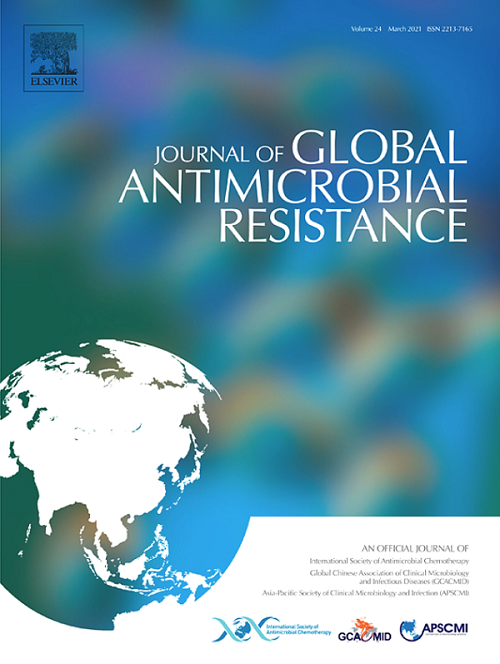Evaluation of hospital antibiotic prescription patterns using WHO AWaRe Classification in Karachi, Pakistan
IF 3.7
3区 医学
Q2 INFECTIOUS DISEASES
引用次数: 0
Abstract
Background
Antimicrobial resistance poses a significant and escalating public health threat. One of the biggest drivers of AMR is the misuse and overuse of antibiotics. Pakistan is the third-highest antibiotic-consuming country among low- and middle-income countries (LMICs). Our study aims to evaluate antibiotic consumption using the WHO AWaRe Classification in hospitalized patients from 2016 to 2023 at a major tertiary care academic medical center in Karachi, Pakistan.
METHODS
This retrospective study examined inpatient antibiotic utilization by extracting data from Electronic Medical Records and pharmacy services at Aga Khan University Hospital in Karachi between 2016 and 2023. Data was collected on patient demographics, antibiotic types, and prescription counts. The consumption of each antibiotic was converted to defined daily dose (DDD)/1,000 patient-days.
RESULTS
During the period from January 2016 to September 2023, a total of 267,972 antibiotics were prescribed. WATCH antibiotics were the most prescribed, ranging from 68.8% to 73.9% of prescriptions followed by ACCESS antibiotics (58-63.9%) of prescriptions between 2016 and 2023 in hospitalized patients. There was a trend towards an increase in prescriptions of RESERVE antibiotics from 3.8% to 5.3% (p<0.001) and a decrease in prescriptions of ACCESS antibiotics from 63.9% to 58 %(p<0.001) (Figure 1).
CONCLUSION
Our study identified a notable increase in the utilization of WATCH group antibiotics compared to ACCESS group and an alarming increase in the utilization of RESERVE group antibiotics. These findings underscore the shifting patterns in antibiotic usage, emphasizing the importance of monitoring and strategic interventions to promote responsible antibiotic prescribing practices.
求助全文
约1分钟内获得全文
求助全文
来源期刊

Journal of global antimicrobial resistance
INFECTIOUS DISEASES-PHARMACOLOGY & PHARMACY
CiteScore
8.70
自引率
2.20%
发文量
285
审稿时长
34 weeks
期刊介绍:
The Journal of Global Antimicrobial Resistance (JGAR) is a quarterly online journal run by an international Editorial Board that focuses on the global spread of antibiotic-resistant microbes.
JGAR is a dedicated journal for all professionals working in research, health care, the environment and animal infection control, aiming to track the resistance threat worldwide and provides a single voice devoted to antimicrobial resistance (AMR).
Featuring peer-reviewed and up to date research articles, reviews, short notes and hot topics JGAR covers the key topics related to antibacterial, antiviral, antifungal and antiparasitic resistance.
 求助内容:
求助内容: 应助结果提醒方式:
应助结果提醒方式:


